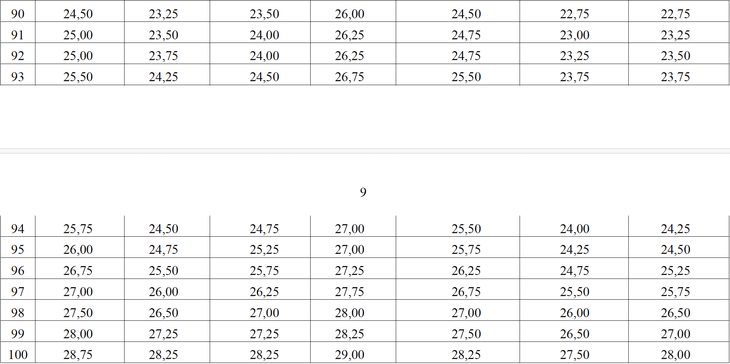
Associate Professor Bui Hoai Thang - Head of Training Department, Ho Chi Minh City University of Technology (Vietnam National University Ho Chi Minh City) - answers questions from parents and students at the 2025 University Aspirations Selection Day organized by Tuoi Tre newspaper - Photo: TTD
According to Associate Professor Dr. Do Van Dung, former rector of Ho Chi Minh City University of Technology and Education, percentile is a statistical concept that helps determine an individual's relative position within a group based on a score or measured value.
With subject-based exam scores, instead of just looking at the absolute score, the percentile indicates how a candidate "ranks" in relation to the entire group of participants.
Mr. Dung commented that English was difficult this year, so the scores for the math-physics-chemistry combination were higher than those for math-physics-English or math-literature-English. If all three combinations of candidates are combined and given a single cutoff score, candidates applying for A01 and D01 will be at a disadvantage compared to those applying for A00.
With this percentile, candidates know what their score is equivalent to in other subject combinations. Universities also know the candidates' scores by subject combination and can use this difference to determine admission criteria and cut-off scores.
For example, a candidate with a D01 subject combination score of 23 might see the D01 score as lower in the A00 score distribution, leading them to hesitate in applying. However, based on the percentiles of the subject combinations recently announced by the Ministry, a 23 in D01 is equivalent to a 25 in A00.
Despite having the same percentile but different scores, these two candidates are considered to have equivalent abilities because they both rank in the 91st percentile.
The candidate's percentile is at position 91, meaning they are in the top 10% of candidates with the highest scores across all subject combinations, even if their overall score is lower. This allows the candidate to understand their ranking in relation to other subject combinations.

Top 10% of candidates with the highest test scores (from the 90th to the 100th percentile) - Screenshot
Suppose there are 100 test-takers and one candidate ranks 90th percentile. This means their score is higher than 90% of the other candidates, with only 10% scoring higher. Conversely, a candidate ranked 50th percentile is considered average, higher than 50% of the other candidates.
This method doesn't rely on absolute scores, but focuses on the score distribution of the entire group, leading to a fairer assessment, especially since scores can fluctuate due to the difficulty of the exam.
To put it simply, you can think of percentiles as a "ranking scale": it's not just about having a high score to win, but also about how the candidate ranks compared to other candidates.
This is more advantageous for candidates in determining their field of study and their chances of being admitted to their desired university.
This also serves as the basis for converting aptitude and thinking test scores to a 30-point scale, aiming to determine that scores from different exams have equivalent value when considering university admissions, thus avoiding unfairness where an easier exam leads to unfairness.
The conversion will be based on statistical data of corresponding score ranges according to percentile levels (e.g., top 0.5%, top 1%, top 3%, top 5%, top 10%...).
For example, if a candidate's score is in the 95th percentile on the aptitude test (meaning they are in the top 5%), it will be converted to an equivalent score in the 95th percentile of the A00 subject combination in the high school graduation exam.
Divide the test score into 100 equal parts.
To calculate the value in exam score conversion, education expert Sai Cong Hong said that several commonly used methods for converting scores include: linear conversion, quantile conversion, z-score, classification, and statistical simulation.
Typically, for exams with varying difficulty levels or score distributions, quantile conversion is used (centiquator is one way to convert scores using quantiles), dividing the data into 100 equal parts, each representing 1% of the total data.
Using percentile methods, a sample size of several thousand or more will yield the most accurate results.
However, Mr. Hong also suggested that only data from candidates who took both exams should be used to construct the percentile conversion table.
Under no circumstances should the distribution of all candidates from each group be used separately. This can easily lead to serious inaccuracies in score conversion and cause unfairness in the admissions process.
Source: https://tuoitre.vn/bach-phan-vi-diem-thi-la-gi-y-nghia-ra-sao-20250723103324949.htm




































![[Photo] Prime Minister Pham Minh Chinh holds a phone call with the CEO of Russia's Rosatom Corporation.](/_next/image?url=https%3A%2F%2Fvphoto.vietnam.vn%2Fthumb%2F1200x675%2Fvietnam%2Fresource%2FIMAGE%2F2025%2F12%2F11%2F1765464552365_dsc-5295-jpg.webp&w=3840&q=75)






































































Comment (0)